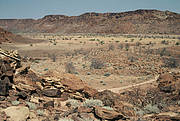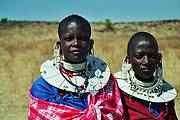Dry but rich: conserving biodiversity in drylands
12 September 2012 | Article
Water is an essential ingredient for life on Earth. Yet its scarcity can still support extraordinary biodiversity. Drylands cover more than 40% of the world’s land surface and are home to unique species and ecosystems. The book Conserving Dryland Biodiversity launched at the IUCN World Conservation Congress, is the first comprehensive analysis of the global importance and significance of dryland biodiversity.
“Despite their relative levels of aridity, drylands contain a great variety of biodiversity. Many animal and plant species and habitats are found only in drylands, making some semi-arid and dry sub-humid areas among the most biodiverse regions in the world,” says Jonathan Davies, Coordinator of IUCN’s Global Drylands Initiative.
“Biodiversity is vital to the livelihoods of many dryland inhabitants playing a central role in traditional risk management strategies, supporting food production and providing a multitude of other services.”
The book is intended to raise awareness and galvanise action to boost drylands conservation and development. It is a call to action as well as a guide to how dryland conservation and development can be equitably pursued. It illustrates the incredible variety of dryland biodiversity, how this has adapted to the special environmental conditions, and how local people and cultures can contribute to conservation.
“This new publication provides examples of successful approaches to conservation including a strong emphasis on community-based solutions and Indigenous and Community Conserved Areas,” said Davies. “It presents examples of sustainable land management as mechanisms for conserving biodiversity which is particularly important if we are to achieve conservation goals on a large scale without competing against food production in a rapidly developing world.”
The book outlines a vision of the future for drylands: one in which biodiversity management and landscape connectivity are taken into account in agricultural development, in which green growth is adapted to the realities of drylands and in which land is conserved to secure food and water provision.
It calls for greater investment in innovation and knowledge, greater provision of incentives and investments, significant improvements in governance and empowerment in drylands and a concerted effort to mainstream dryland biodiversity at all levels – from that of the farmer to that of government and international institutions. It also highlights the global risks and costs of failing to translate this optimism into action at an adequate scale.
Conserving Dryland Biodiversity is the product of collaboration between several institutions: IUCN, the United Nations Convention to Combat Desertification and UNEP’s World Conservation Monitoring Centre. Experts of IUCN Commissions and numerous other contributors enriched the book with their experiences and case studies.
You can download Conserving Dryland Biodiversity here: http://data.iucn.org/dbtw-wpd/edocs/2012-050.pdf





